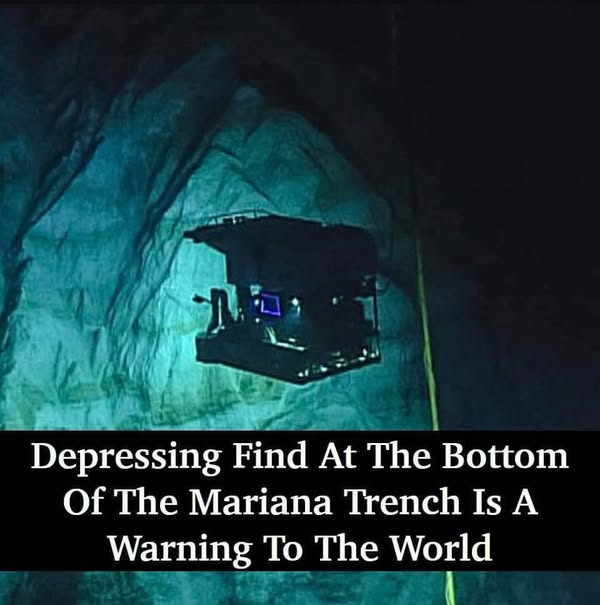Once considered an untouched and pristine part of our planet, the Mariana Trench—Earth’s deepest oceanic trench—has become a sobering symbol of humanity’s growing environmental footprint. Nestled nearly seven miles beneath the ocean’s surface, this deep-sea chasm was long thought to be safe from the reach of pollution.

But a recent, disheartening discovery has proven otherwise: a plastic bag was found lying on the seafloor, a stark and undeniable sign that not even the most remote corners of our planet are safe from the consequences of human carelessness. This discovery wasn’t just another addition to a growing list of marine debris; it was a wake-up call—a loud, echoing reminder that plastic pollution is far more widespread and invasive than we imagined. The presence of this plastic bag at such an extreme depth reveals the incredible reach of our single-use plastic addiction and challenges the belief that some ecosystems are too distant to be affected.
What’s even more troubling is that this isn’t an isolated case. Data from the Deep-Sea Debris Database, compiled by scientists and researchers, shows that plastic makes up the majority of man-made debris found deep in the ocean. Among the types of plastic debris, single-use plastics—like grocery bags, food wrappers, and plastic packaging—are the most common. In fact, studies reveal that a staggering 89 percent of the plastic recovered from the Mariana Trench is single-use, highlighting the persistent problem posed by disposable plastic products. These plastics, which are used for mere minutes, persist in the environment for hundreds of years.
While the Mariana Trench might seem like a lifeless abyss, it is, surprisingly, home to diverse marine life. Creatures such as amphipods, jellyfish, deep-sea octopuses, and other rarely seen species inhabit this extreme environment. The problem is that plastics are not just cluttering their world—they’re interfering with it. Seventeen percent of the plastic-related images recorded in the Deep-Sea Debris Database depict marine animals either entangled in or ingesting plastic.
These interactions can be fatal, leading to starvation, injury, or impaired movement, all of which disrupt the fragile balance of these deep-sea ecosystems. The widespread presence of plastic in such a remote location makes one thing clear: plastic pollution is not just a coastal problem—it’s a global crisis. Despite its distance from human populations, the Mariana Trench is still receiving our waste. That’s because the ocean is interconnected, and plastics don’t need direct dumping to end up at the bottom of the sea. Roughly 20 percent of oceanic plastic pollution comes from shipping and marine activities, but the remaining 80 percent is land-based. Urban runoff, storm drains, and rivers carry plastic waste from cities and communities to the oceans. In fact, studies have pinpointed just ten major rivers—mostly in Asia and Africa—as responsible for a significant portion of plastic flowing into the oceans. These rivers pass through densely populated regions where plastic waste management is often lacking, enabling vast amounts of plastic to escape into waterways and eventually reach the sea. Once in the ocean, plastic can be transported by currents for thousands of miles, breaking down into microplastics but never fully disappearing. Some of it ends up in massive floating garbage patches, like the infamous Great Pacific Garbage Patch, which is made up largely of discarded fishing nets, lines, and gear—another major source of ocean plastic. Abandoned fishing equipment, often referred to as “ghost gear,” is especially damaging because it continues to trap and kill marine life long after it’s been lost or dumped. The plastic bag at the bottom of the Mariana Trench isn’t just litter—it’s a symbol of a problem that starts with our everyday choices and spans the entire globe. It reflects the urgent need for action: reducing plastic consumption, improving waste management systems, and investing in innovative alternatives to disposable products. The plastic we discard doesn’t just vanish—it travels, sinks, entangles, and ultimately reshapes entire ecosystems, even those we may never see. The trench’s silent warning should motivate us to think critically about how our actions affect the planet, no matter how far removed they may seem.





